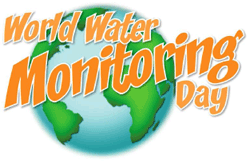My Cart
Your Shopping Cart is currently empty. Use Quick Order or Search to quickly add items to your order!
By Beth Van Fleet
Department Head, Ecology

World Water Monitoring Day (WWMD) started nationally in 2002 to celebrate the anniversary of Congress passing the Federal Water Pollution Control Amendments of 1972—better known as the Clean Water Act. WWMD went global the next year, becoming an opportunity for world citizens to discover our shared watershed, Earth. Participating in this event can be a great learning experience for your students. Although WWMD is officially observed on September 18 (originally October 18), you and your students can collect watershed-site-observations data locally and report it to the WWMD database anytime between March 22 and December 31 this year.
The World Water Monitoring Organization collects water and air temperature, turbidity (clarity), dissolved oxygen (DO), and pH (acidity) data. Use instrumentation or kits to obtain these measurements, whichever you feel appropriate for your class.
Visit www.wwmd.org for more information or help arranging your sampling event. With proper planning, a field excursion can help students better understand their watershed and, of course, have lots of fun.